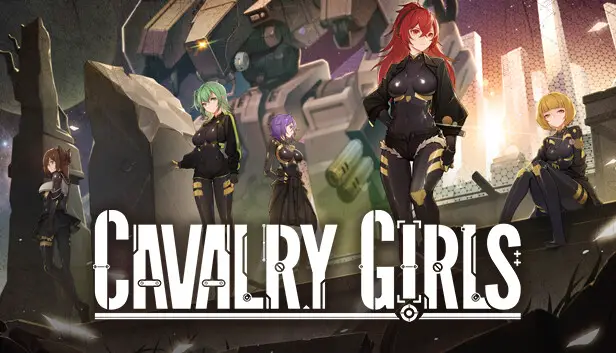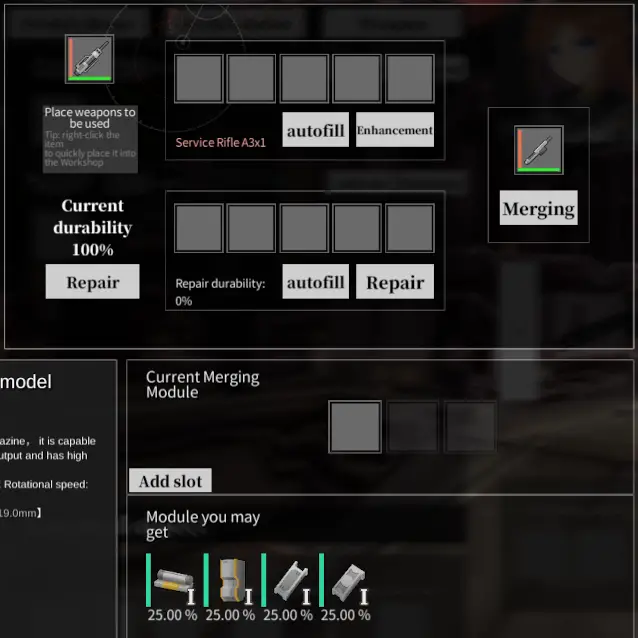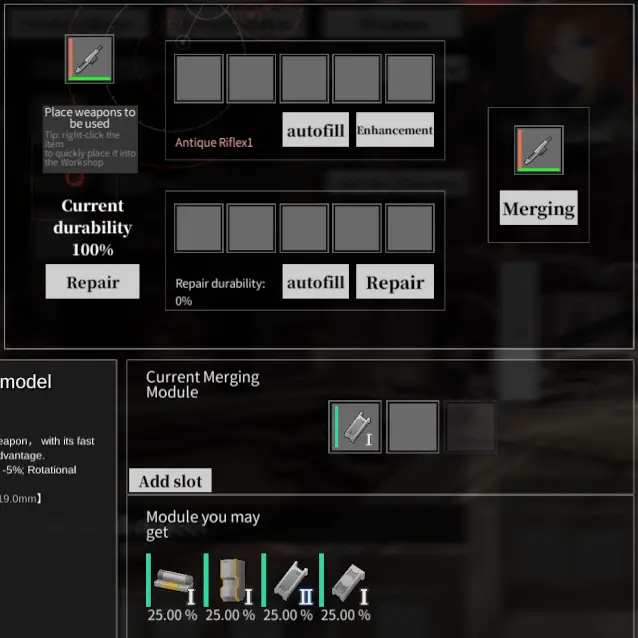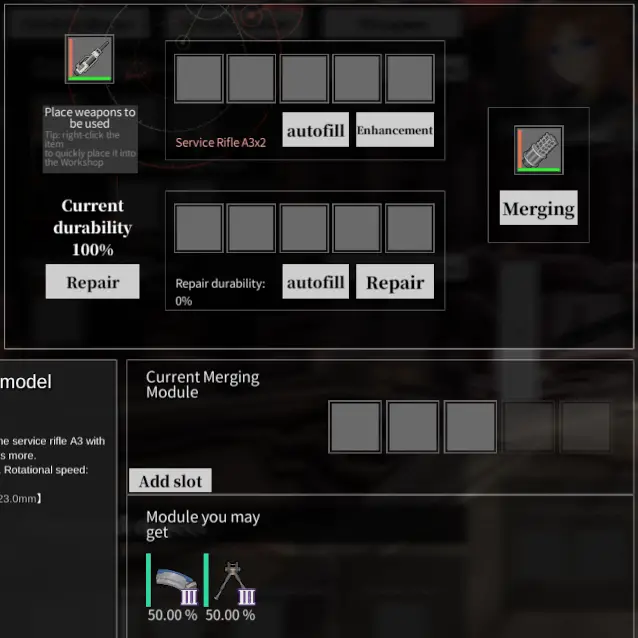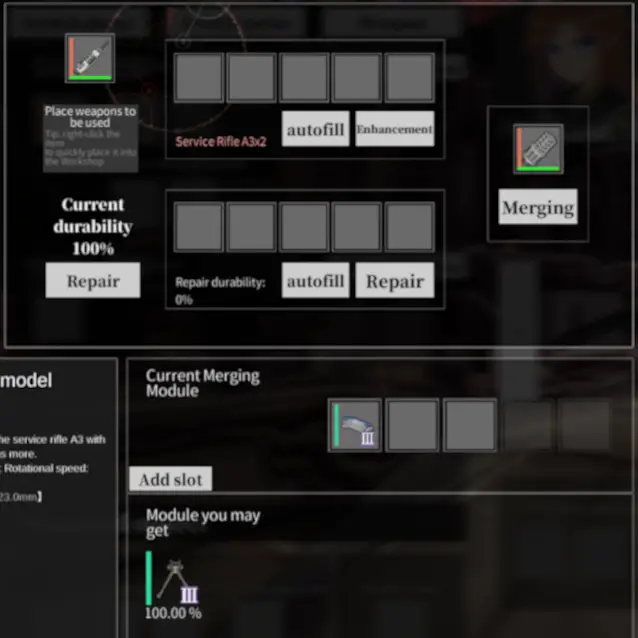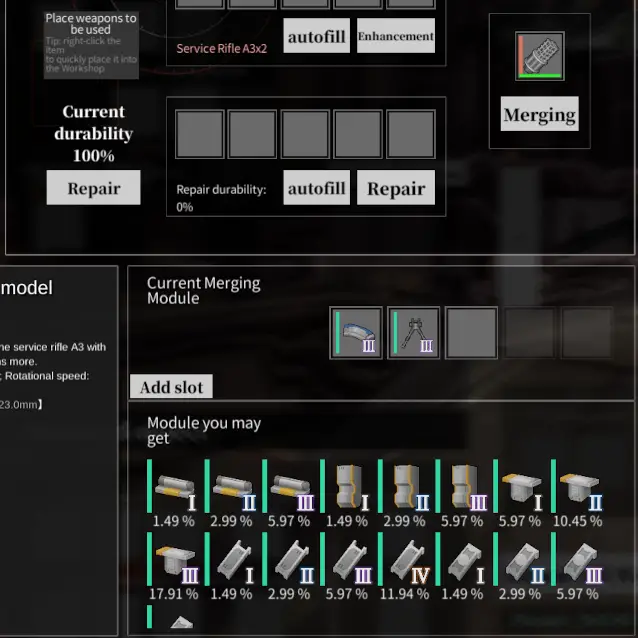This guide will showcase the spreadsheet that displays the initial fusion cores for each weapon in Cavalry Girls. I plan to keep it updated by adding any hidden or secondary core details I come across while playing the game.
Alongside that, I’ve noted down some basics about the weapon classes and fusions to provide a better understanding for others seeking more information on weapon merging. I hope this proves helpful to those looking for additional insights into the game’s mechanics. You can also check this page for more Cavalry Girls guide.
Weapon Fusion Spreadsheet
For those who want to dive into the details right away, the spreadsheet is available here: Google Sheets Link. Given its size, it couldn’t be condensed into a single table within this guide, and freezing panes might not work well on a shared file. If you have suggestions on how to address this issue, please share.
Now that you’ve had a chance to explore the comprehensive spreadsheet, I can proceed to break down the information into smaller segments and offer explanations on specific aspects of the fusion process.
Weapon Fusion Cores Overview
Weapon fusion cores are made by combining a primary weapon with a secondary weapon. Niestety, this process destroys the secondary weapon, but the result is a “Rdzeń” that boosts the stats of the primary weapon in some way.
These cores provide an alternative method for enhancing your weapons, similar to modules. Jednakże, unlike modules, you can’t stack them. Na przykład, you can’t combine an Armor Piercing IV and an Armor Piercing III core on the same weapon for a cumulative effect.
While this limitation can be frustrating, upgrading cores is simpler than crafting and combining eight level I modules to create a single level IV module. It’s worth noting that upgrading cores may involve some hassle due to the random nature of obtaining the desired core. If you end up with a core you don’t want, you can discard it and try your luck again by sacrificing another weapon.
It’s important to mention that all initial core offerings are documented in a previous spreadsheet. To better explain, let’s transition into further details.
Weapon Types
Why do the types of weapons matter in the fusion system? Dobrze, the entire fusion process revolves around these weapon types. Similar to how specific modules can only be equipped to certain weapon types, the generation and use of fusion cores are also tied to specific weapon types.
While common sense plays a role, and most fusion cores align with the characteristics of the weapons they come from, there can be some frustrations. Na przykład, ammo cores logically come from weapons with large ammo capacities. Jednakże, the chart I created reflects hours of frustration because why settle for a High Capacity Magazine core when the Super Large Capacity Drum Magazine core is much better? Why can’t I get a Kinetic Splitter core A or B on my Service Rifle A3? The reason lies in the fact that not all cores are compatible with all weapons, and each weapon has its unique attributes.
- Kinetic: More than half of the weapons fall into the kinetic category, serving as a super-type with various sub-types beneath it. Szczególnie, the exceptional Service Rifle A3 and its subsequent upgrades are the sole purely kinetic weapon in this category.
- Guide Rail: All guide rail weapons are kinetic, forming a sub-type. This includes rifles and submachine guns, such as the electromagnetic and water bullet gun, with the exception of the A3 family. Dodatkowo, the Rapid Firing Gun stands out as the sole sniper weapon within the guide rail sub-type. It’s essential to note that during the creation of the spreadsheet, I observed two pairs of submachine guns sharing the same names but having different stats.
- Snajper: Every sniper weapon falls into the kinetic category, establishing it as a sub-type. The Rapid Firing Gun mentioned earlier is the only exception among snipers.
- Machine Gun: All machine guns are classified as kinetic, making this a straightforward sub-type.
- Spreadshot: There’s a diverse array of spreadshot guns, forming a sub-type. The majority, except for the howitzer and its upgrades, belong to the kinetic super-type.
- Materiał wybuchowy: Only two weapons and their upgrades fall under the pure super-type of explosives, with the third being the howitzer, functioning as an explosive spreadshot.
- Sprayer: All sprayer weapons are self-contained within this category.
- Promień: All ray weapons are self-contained, constituting a distinct category.
- Arc: Similar to ray weapons, all arc weapons are self-contained within their specific category.
Now that we’ve explored the different weapon types, it’s evident that their classifications impact the modules they can equip. Ten, z kolei, influences the compatibility with specific cores. Na przykład, only guide rail weapons have the ability to equip the grenade attachment module. Więc, it follows that these weapons are the only ones capable of using the mounted grenade core.
While this connection may seem a bit complex, there’s more to delve into.
Przykłady
Let’s walk through a basic weapon merging example.
In the upper left, you have the weapon you want to enhance, the sacrificial merging weapon in the upper right, and the initial core offerings at the bottom, each with its RNG percentages.
After the merge, you obtained a reloading core, which is a nice outcome. Teraz, let’s consider the possibility of buying another merging slot and inserting another identical rifle for merging. Logic might suggest that each core would now have a 33.33% szansa, given that there were initially four options at 25% każdy, Prawidłowy?
Niespodzianka!
In the next image, there is a hidden chance to upgrade the core to level II that wasn’t initially presented. If you wanted that level II upgrade instead of the other cores, you could achieve a 100% chance by not buying another merging slot and repeating the process with the same rifle.
You can strategically force specific core upgrades by limiting your merging slots. Tędy, sacrificing cheaper weapons to RNG for an initial lower-level core can guarantee a higher-level core later on without relying on RNG and potentially saving money.
Teraz, you might be wondering if this applies universally to all cores. Dobrze, it’s not that straightforward. Some cores go up a level, others stop, and some exhibit unique behavior. Let’s explore another example below.
W tym przypadku, it appears that certain weapons offer numerous options when you progress beyond the initial cores and explore hidden cores. While the spreadsheet may not be complete for hidden cores, I’ll do my best to keep it updated as I delve deeper into the game.
Wniosek
Check out my arkusz, it will give you details, but if you don’t, oto podstawy.
- Kinetic weapons give reload and kinetic-based cores.
- Guide rail weapons don’t give much, mostly sticking with the same as kinetic.
Sniper weapons provide:
- Crit, szkoda, and crit damage.
- Delayed fuse core for explosives.
Karabiny maszynowe (MGs) offer:
- Ammo cores.
- Bipod and rapid ray firing cores.
Spreadshots provide:
- Splitter cores.
- Ray trident cores.
- Some arc cores and spread constriction.
Sprayers seem to offer a bit of everything to each weapon type, following spreadshots splitting.
Rays give:
- Some ray-centric cores.
- Offer a couple of other cores to different weapon types.
Arcs give:
- Some arc-centric cores.
- Offer a couple of other cores to different weapon types. (Except the healing gun, it kinda sucks)
To wszystko, co dzisiaj udostępniamy w tym celu Cavalry Girls przewodnik. Ten przewodnik został pierwotnie stworzony i napisany przez Ilikerice. Na wypadek, gdybyśmy nie zaktualizowali tego przewodnika, możesz znaleźć najnowszą aktualizację, postępując zgodnie z tym połączyć.
